EIA Drilling Productivity Report Update – Aug ’20
According to the EIA’s August Drilling Productivity Report, Sep ’20 U.S. oil output is expected to decline slightly from the four month high level experienced throughout the previous month. The Drilling Productivity Report uses recent data on the total number of drilling rigs in operation, estimates of drilling productivity, and estimated changes in production from existing wells to provide estimated changes in oil production for the seven key regions shown below.
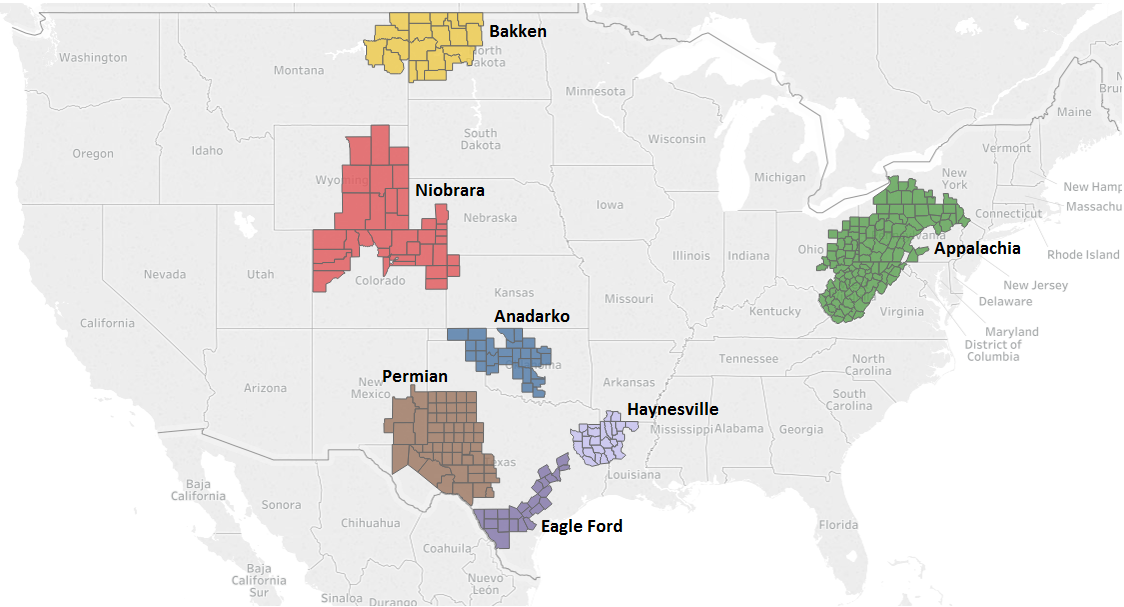 Aug ’20 production levels were revised 87,000 barrels per day (bpd), or 1.2%, above levels previously forecasted, finishing 238,000 bpd, or 3.2%, above Jul ’20 production levels and reaching a four month high level. Sep ’20 production levels are expected to decline 20,000 bpd, or 0.3%, from the Aug ’20 revised production levels to 7.56 million bpd, however.
Aug ’20 production levels were revised 87,000 barrels per day (bpd), or 1.2%, above levels previously forecasted, finishing 238,000 bpd, or 3.2%, above Jul ’20 production levels and reaching a four month high level. Sep ’20 production levels are expected to decline 20,000 bpd, or 0.3%, from the Aug ’20 revised production levels to 7.56 million bpd, however.
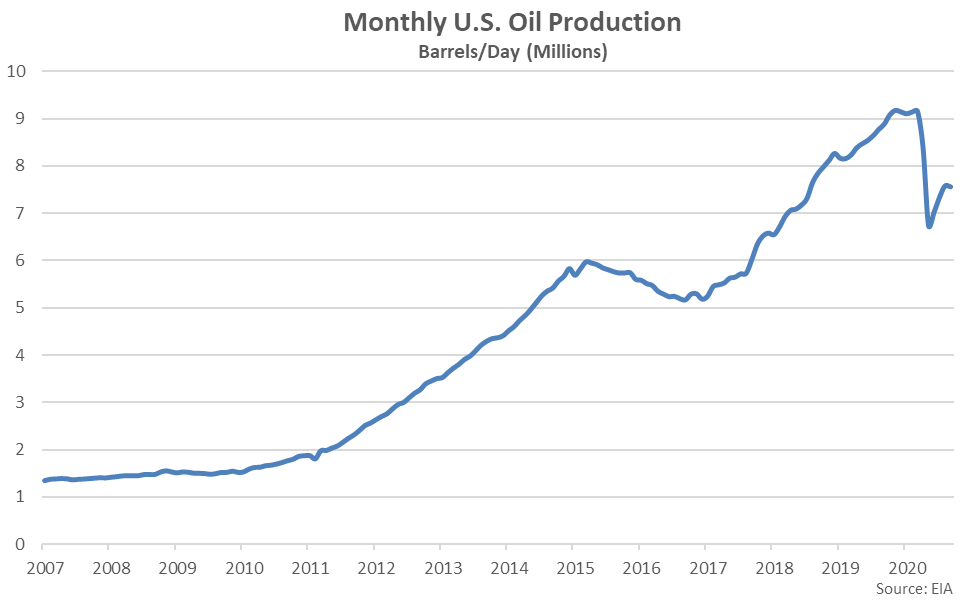 The Sep ’20 projected month-over-month decline in oil production would be the first experienced throughout the past four months. Record large month-over-month declines in oil production were experienced throughout the months of April and May.
The Sep ’20 projected month-over-month decline in oil production would be the first experienced throughout the past four months. Record large month-over-month declines in oil production were experienced throughout the months of April and May.
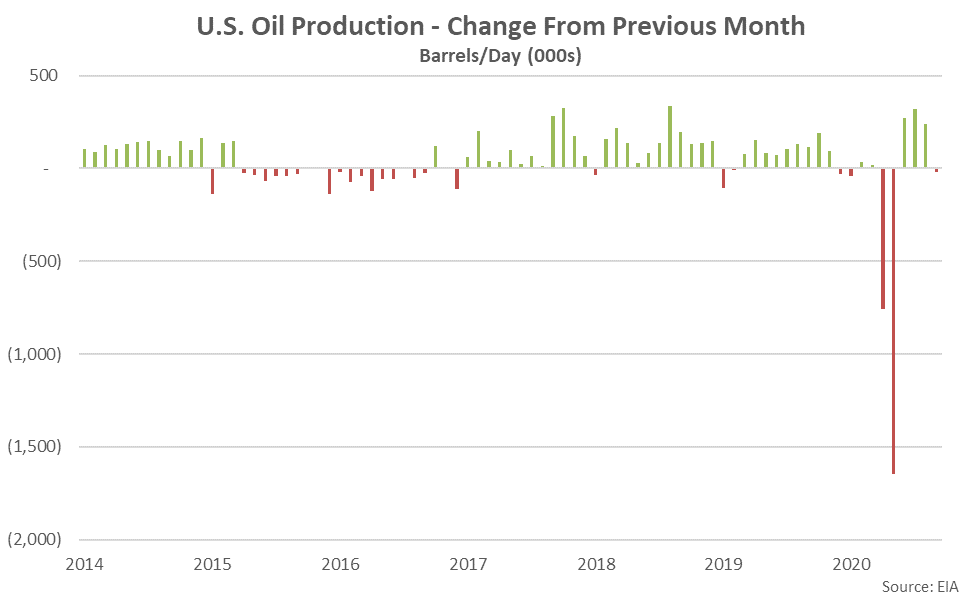 Oil production is expected to decline most significantly from the previous month within the Eagle Ford (-14,000 bpd) and Anadarko (-13,000 bpd) regions. The expected declines in Eagle Ford and Anadarko production levels more than offset an overall increase in oil production experienced throughout the other production regions. Production within the Bakken (+7,000 bpd) and Permian (+6,800 bpd) regions increased most significantly from the previous month.
Oil production is expected to decline most significantly from the previous month within the Eagle Ford (-14,000 bpd) and Anadarko (-13,000 bpd) regions. The expected declines in Eagle Ford and Anadarko production levels more than offset an overall increase in oil production experienced throughout the other production regions. Production within the Bakken (+7,000 bpd) and Permian (+6,800 bpd) regions increased most significantly from the previous month.
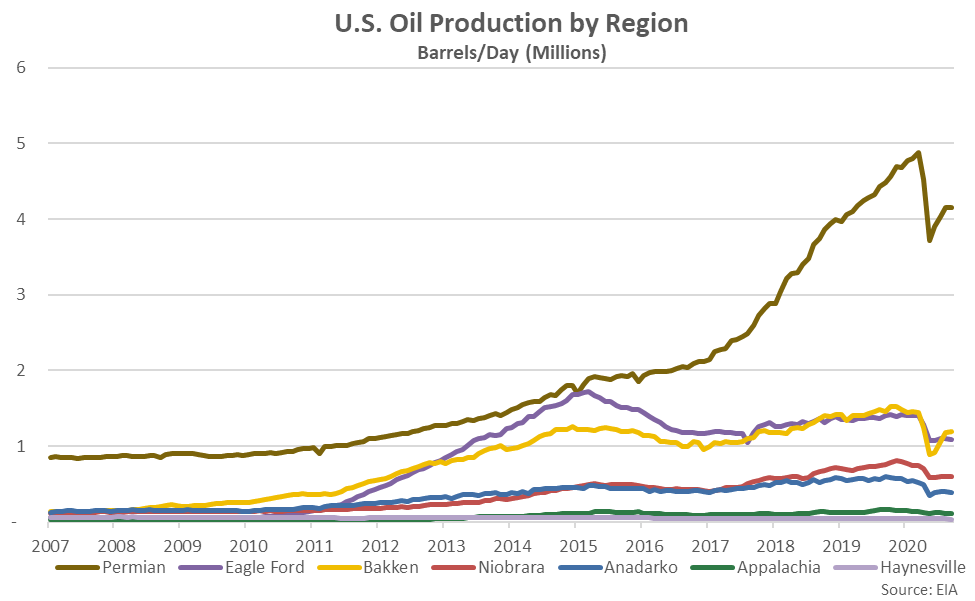 Sep ’20 oil production is expected to remain lower on a YOY basis for the fifth consecutive month, finishing 14.9% below previous year levels.
Sep ’20 oil production is expected to remain lower on a YOY basis for the fifth consecutive month, finishing 14.9% below previous year levels.
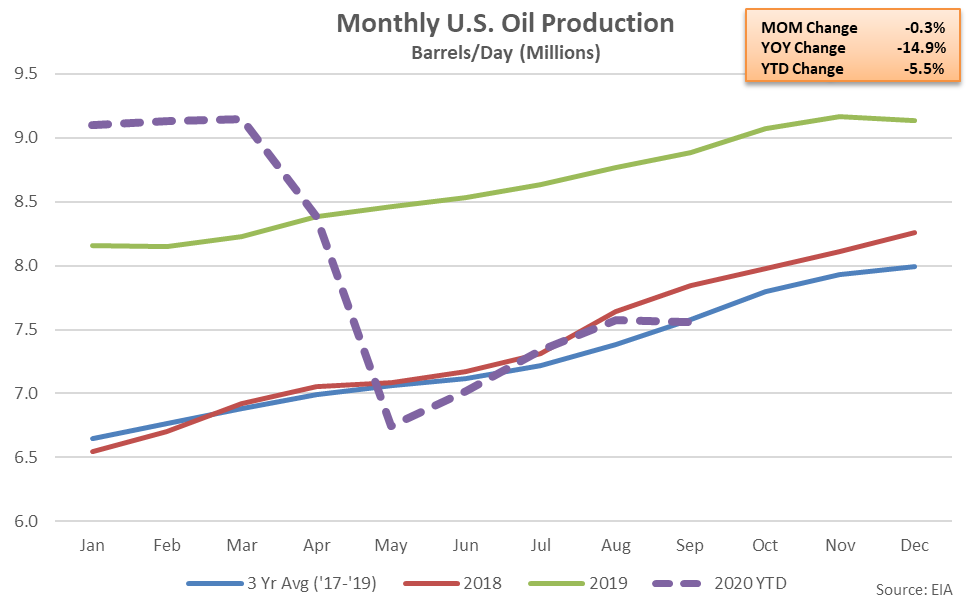 Jul ’20 U.S. drilled-but-uncompleted (DUC) wells increased 0.4% from the previous month, rebounding to a six month high level. DUC wells, which have been drilled by producers but have not yet been made ready for production, have been compiled since Dec ’13.
Jul ’20 U.S. drilled-but-uncompleted (DUC) wells increased 0.4% from the previous month, rebounding to a six month high level. DUC wells, which have been drilled by producers but have not yet been made ready for production, have been compiled since Dec ’13.
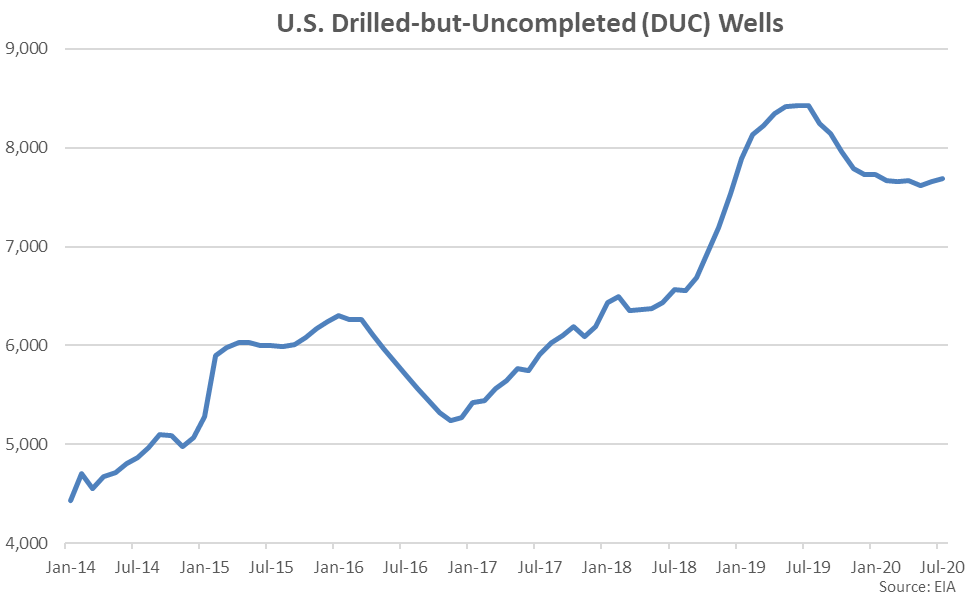 Permian DUC wells increased most significantly from the previous month throughout Jul ’20, rebounding to a record high level. The increase in Permian DUC wells more than offset an overall decline in DUC wells experienced throughout the other production regions.
Permian DUC wells increased most significantly from the previous month throughout Jul ’20, rebounding to a record high level. The increase in Permian DUC wells more than offset an overall decline in DUC wells experienced throughout the other production regions.
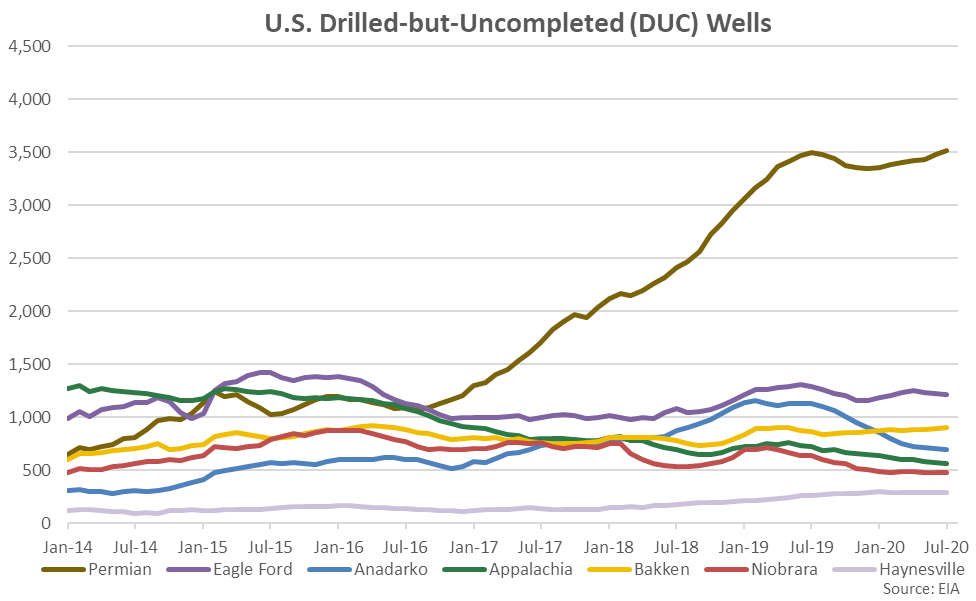
 Aug ’20 production levels were revised 87,000 barrels per day (bpd), or 1.2%, above levels previously forecasted, finishing 238,000 bpd, or 3.2%, above Jul ’20 production levels and reaching a four month high level. Sep ’20 production levels are expected to decline 20,000 bpd, or 0.3%, from the Aug ’20 revised production levels to 7.56 million bpd, however.
Aug ’20 production levels were revised 87,000 barrels per day (bpd), or 1.2%, above levels previously forecasted, finishing 238,000 bpd, or 3.2%, above Jul ’20 production levels and reaching a four month high level. Sep ’20 production levels are expected to decline 20,000 bpd, or 0.3%, from the Aug ’20 revised production levels to 7.56 million bpd, however.
 The Sep ’20 projected month-over-month decline in oil production would be the first experienced throughout the past four months. Record large month-over-month declines in oil production were experienced throughout the months of April and May.
The Sep ’20 projected month-over-month decline in oil production would be the first experienced throughout the past four months. Record large month-over-month declines in oil production were experienced throughout the months of April and May.
 Oil production is expected to decline most significantly from the previous month within the Eagle Ford (-14,000 bpd) and Anadarko (-13,000 bpd) regions. The expected declines in Eagle Ford and Anadarko production levels more than offset an overall increase in oil production experienced throughout the other production regions. Production within the Bakken (+7,000 bpd) and Permian (+6,800 bpd) regions increased most significantly from the previous month.
Oil production is expected to decline most significantly from the previous month within the Eagle Ford (-14,000 bpd) and Anadarko (-13,000 bpd) regions. The expected declines in Eagle Ford and Anadarko production levels more than offset an overall increase in oil production experienced throughout the other production regions. Production within the Bakken (+7,000 bpd) and Permian (+6,800 bpd) regions increased most significantly from the previous month.
 Sep ’20 oil production is expected to remain lower on a YOY basis for the fifth consecutive month, finishing 14.9% below previous year levels.
Sep ’20 oil production is expected to remain lower on a YOY basis for the fifth consecutive month, finishing 14.9% below previous year levels.
 Jul ’20 U.S. drilled-but-uncompleted (DUC) wells increased 0.4% from the previous month, rebounding to a six month high level. DUC wells, which have been drilled by producers but have not yet been made ready for production, have been compiled since Dec ’13.
Jul ’20 U.S. drilled-but-uncompleted (DUC) wells increased 0.4% from the previous month, rebounding to a six month high level. DUC wells, which have been drilled by producers but have not yet been made ready for production, have been compiled since Dec ’13.
 Permian DUC wells increased most significantly from the previous month throughout Jul ’20, rebounding to a record high level. The increase in Permian DUC wells more than offset an overall decline in DUC wells experienced throughout the other production regions.
Permian DUC wells increased most significantly from the previous month throughout Jul ’20, rebounding to a record high level. The increase in Permian DUC wells more than offset an overall decline in DUC wells experienced throughout the other production regions.
